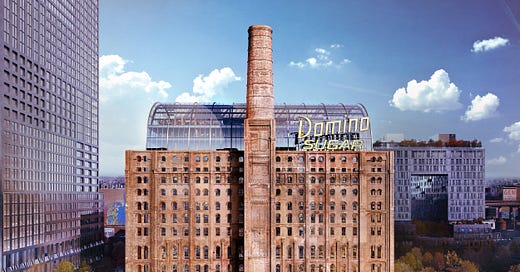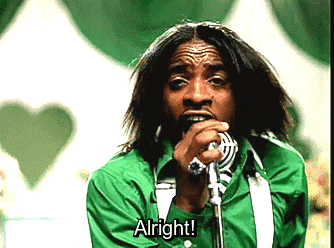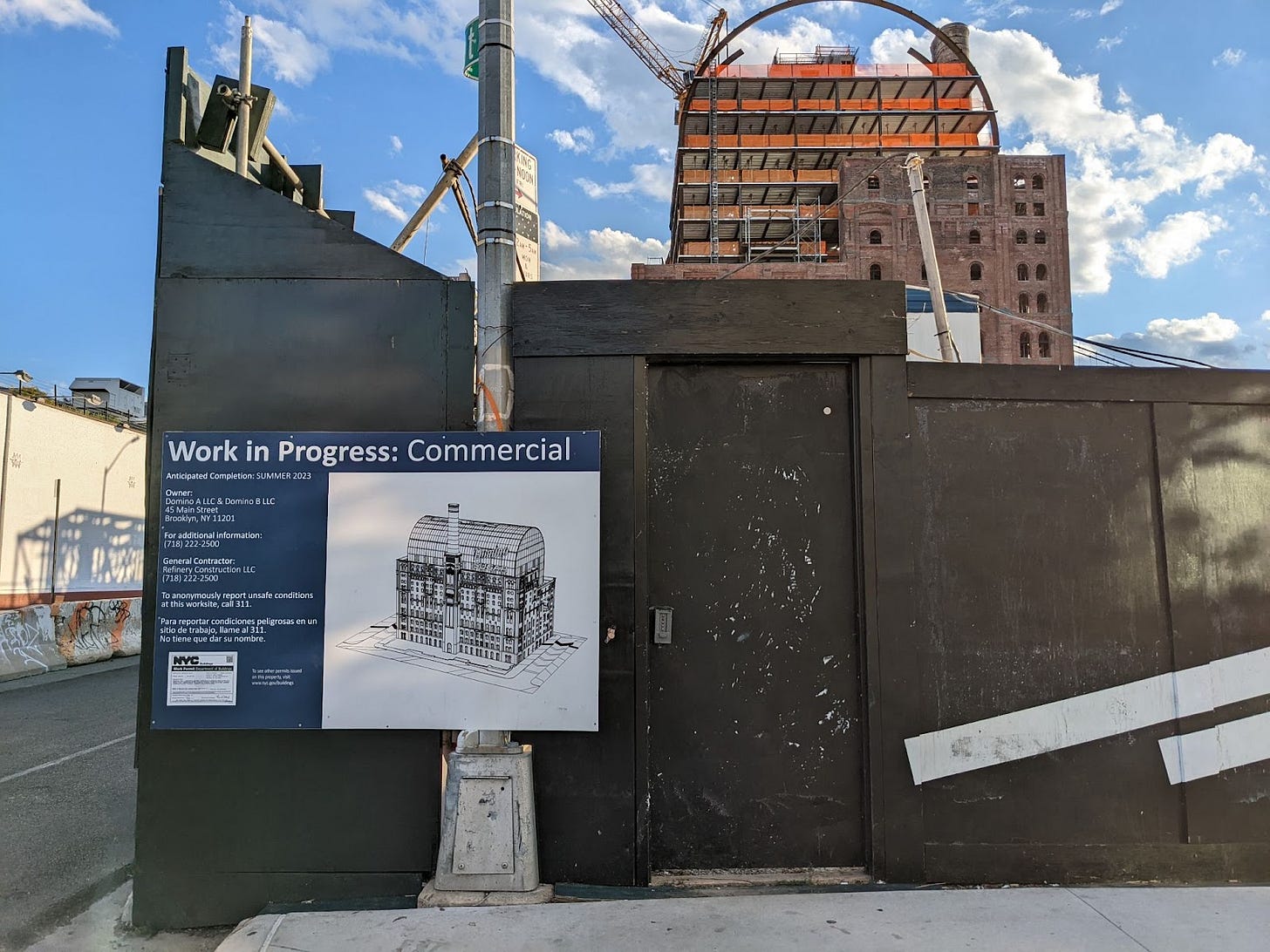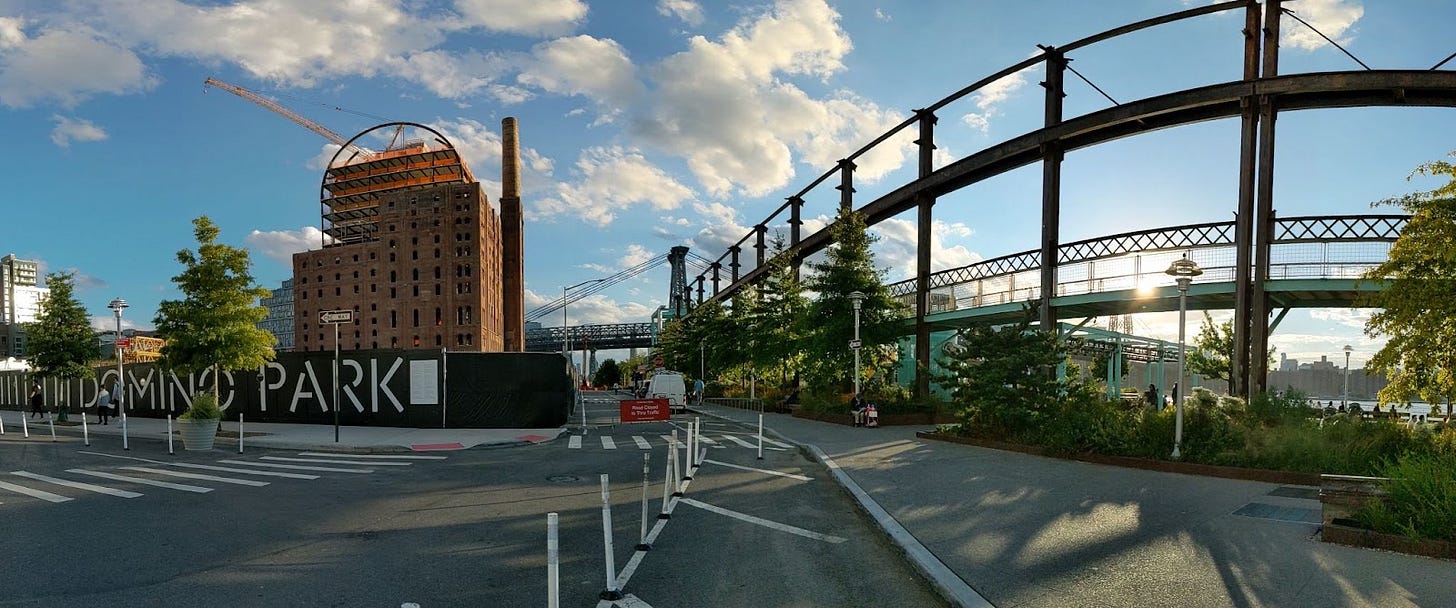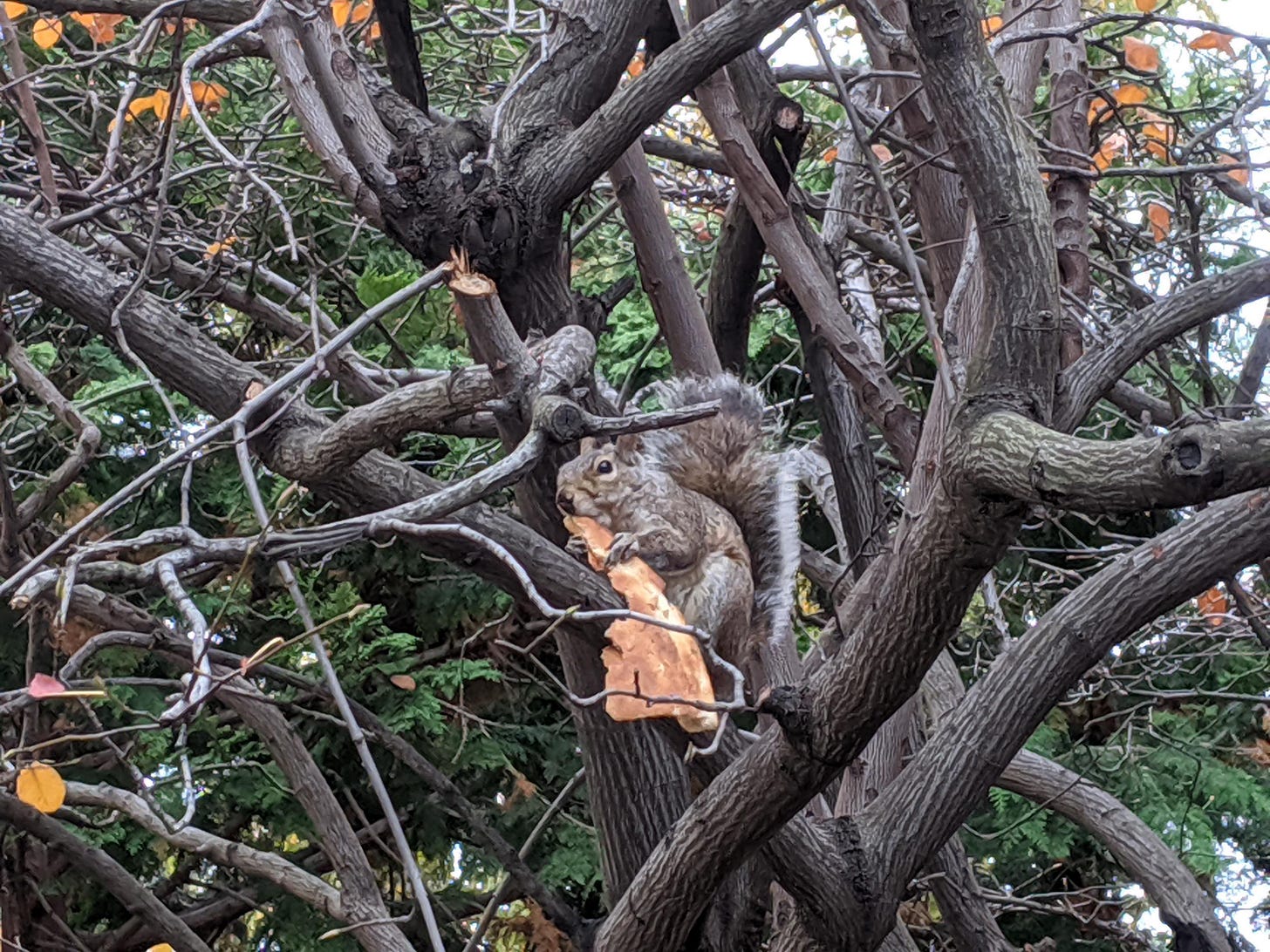Uncertainty #2: American Sugar
After talking with architect Vishaan Chakrabarti, Vanessa reconnects to her urbanist roots, digging through her own city's past, lamenting its present, and (maybe) finding some hope for the future.
Hello there, Uncertain Things listeners! Welcome to our second ever Uncertainty newsletter — and the first in which I (Vanessa) take the pen. 😱
As you may or may not know, my professional background is in urbanism/architecture journalism. So, spoiler alert: nerdy urbanism is ahead ⚠️ (for Culture War content, stay tuned for Uncertainty #3, when Adaam re-takes the lead).
Last week, we got to speak with Vishaan Chakrabarti, an urbanist I’ve admired for a while — and not just for his architectural work. Most architects speak in a language that’s infuriatingly inscrutable and smoke-up-your-assy. Vishaan, instead, talks like a human. And he works with journalists to create words and images that clearly communicate architecture’s potential to regular people who care about their cities.
Take Manhattan Without Cars, when Vishaan collaborated with Farhad Manjoo to show what could be possible if we gave the land allocated to vehicles — road bed makes up about a third of New York City’s streets — back to people. Or Penn Station Reborn. Penn Station’s mid-century transformation from transcendent work of architecture to putrid underground labyrinth is one of New York’s most tragic urbanist errors — as NYT architecture critic Michael Kimmelman once eloquently put it: “'One entered the city like a god; one scuttles in now like a rat.”). Vishaan worked with Kimmelman to re-imagine how it could be returned to its former splendor (the proposal ultimately wasn’t taken up but, hey, the new Moynihan Train Hall seems to have taken at least some inspiration from it).
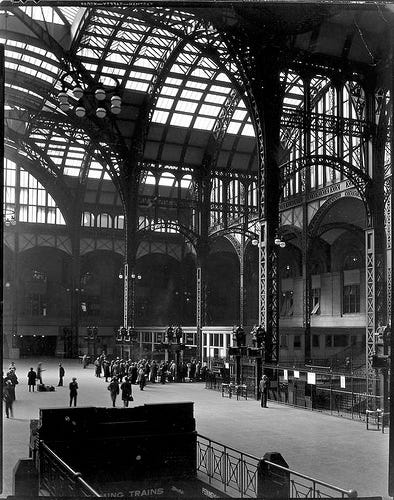
For Vishaan, his journalistic collaborations are about inspiring people about what’s possible — about injecting optimism and a sense of tangible, everyday joy back into a societal conversation laden with cynicism and abstraction. Rather than get weighed down by the crushing impossibility of stopping climate change, or ending racism, or reforming the corruption of our political systems, consider, instead, how we could shape the world around us, on a very local level, and begin to inject our principles of sustainability, justice, and representation into our daily lives. Imagine: if we all felt inspired and activated to make our corners of the world a bit better, how much more attainable the seemingly impossible would become. (Full disclosure: I love the idea. The execution? I.e. how can I make my corner — and, at scale, world — a better place? No idea.)

Epic Fail
Vishaan also taught me something I didn’t know before: the original definition of “The American Dream.” I assumed it was a phrase born out of the post-World War II boom, a slogan designed to inspire Americans to strive until they could leave the city and raise a family in a suburban house with a yard and a fence all their own.
But, in fact, it was coined by historian James Truslow Adams in 1931, in a book he would have called The American Dream — if his publisher hadn’t found the title too glib on the heels of one of the worst decades in American history. In The Epic of America, Adams writes that the American Dream is: “a dream of a social order in which each man and each woman shall be able to attain to the fullest stature of which they are innately capable, and be recognized by others for what they are, regardless of the fortuitous circumstances of birth or position.” There’s nothing about property, or the accumulation of things, or the grassy lawns of suburbia in that definition at all. Rather, it speaks to an equity of opportunity — no matter where you come from or where you live, here, you can become all that you have the potential to be.
Adams wasn’t under the rosy impression that Americans had actually achieved said dream, but, he noted, it “has been realized more fully in actual life here than anywhere else, though very imperfectly even among ourselves.” It’s a sentiment that — for me, at least, as a liberal steeped in panic porn and content made for doom-scrolling fodder — is worth remembering.
Lend me some sugar, I am your neighbor!
With the Vishaan interview fresh in my mind, I was biking back home to Queens from a freelancing gig in Brooklyn the other day when I noticed the phrase “Domino Park” plastered along some scaffolding in Williamsburg. I realized this must be the site of the Domino Sugar Refinery, a commercial building which, as Vishaan mentioned in our episode, his firm — Practice of Architecture and Urbanism — has been working on for the past few years.
I’m a real sucker for post-industrial re-use (give me a smoke stack and a water tower and I’m yours), and I love that Vishaan’s firm is attempting to keep as much of the original 19th century brick structure intact as possible — by essentially building a new, glass building inside the facade. This may sound like an odd solution, but it’s pretty smart — it will create virtually column-free interiors with plenty of light and views and an airtight curtainwall1 for energy-efficiency (part of the strategy to keep the building net-zero).
Don’t get me wrong — this building is sitting on ground-zero of gentrified New York and will certainly cater to some ultra-rich, yuppy office tenants. But at least its architectural form — and extensive landscaping on a public waterfront — will make it a welcome addition to a city increasingly overwhelmed with banal, basic buildings.
Things Worth Your Time ⏰
🗞Nellie Bowles’ Atlantic article on SF — which we quoted often in our conversation with Vishaan — is a must-read: “How San Francisco Became A Failed City.”
🎧 I had a fascinating follow-up convo with Vishaan for my other podcast Urban Roots, where he and my historic preservationist co-host Deqah bonded over the idea of “community preservation” — an approach to preservation that is less about saving buildings, and more about giving communities what they need to connect to the past and thrive in the future.
🎧Adaam and I previously talked to another urbanist hero of mine, Justin Davidson, about how we memorialize traumatic historical events in public spaces.
🎧If you, too, are an industrial cities fan, and want to know how cities are attempting to bring industry back in a sustainable, equitable way, check out my City of the Future episode on Next-Gen Manufacturing. (Shout out to Uncertain Things listener Johanna Greenbaum for helping to make that episode possible.)
What We’re Working On ⏭
We recently had a fascinating conversation with the founder of Cliodynamics, Peter Turchin. Turchin’s best known for his 2010 prediction that, by 2020, we’d be experiencing new levels of unrest — and would potentially be en route to civil war. We got a sneak peek of Turchin’s new book for that interview, and listeners, you are going to love it. The conversation also made us imagine a supergroup panel of end times analysts: Peter Turchin, Martin Gurri, and Niall Ferguson in conversation. Should we make it happen? Let us know what you think — send a note/voice memo to theuncertaintimes@gmail.com or @uncertainpod.
One Last Certain Thing…
New York City squirrels are the best squirrels.
😇 Like Uncertain Things? Share us with your friends — and enemies. 😈
As PAU principal Ruchika Modi told me via email: “At a high level, the curtainwall is a high performance glass assembly with a triple silver coating and additional shading at the barrel vault, both exterior (frit on glass) and interior (shades). The lower floors are shaded by the historic brick facade, which helps significantly in terms of energy performance.”

